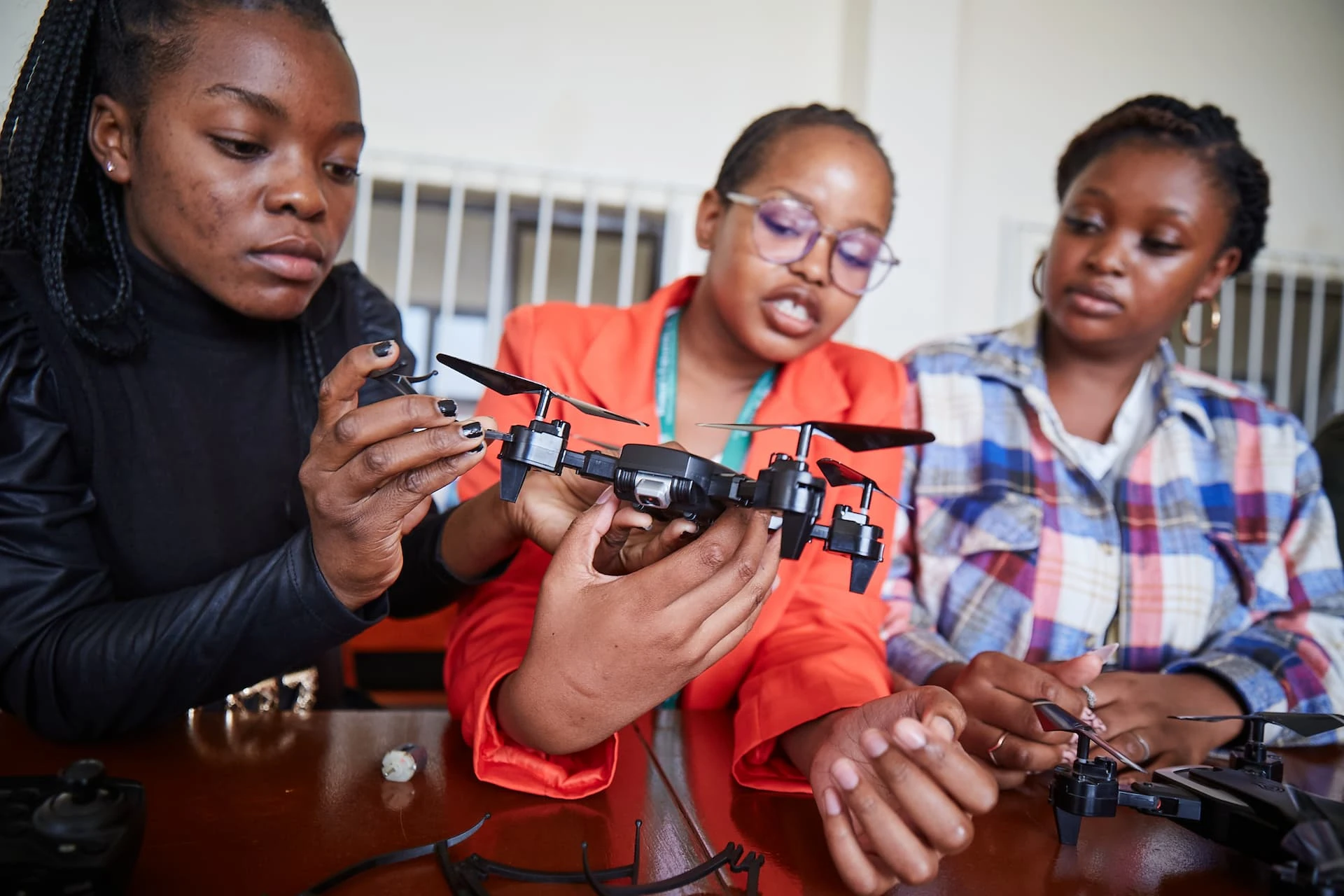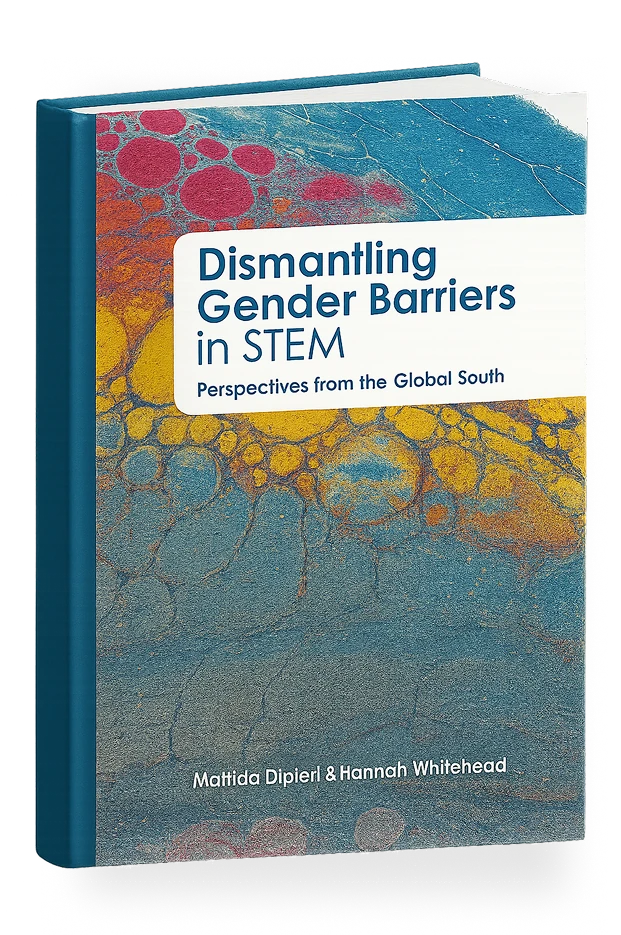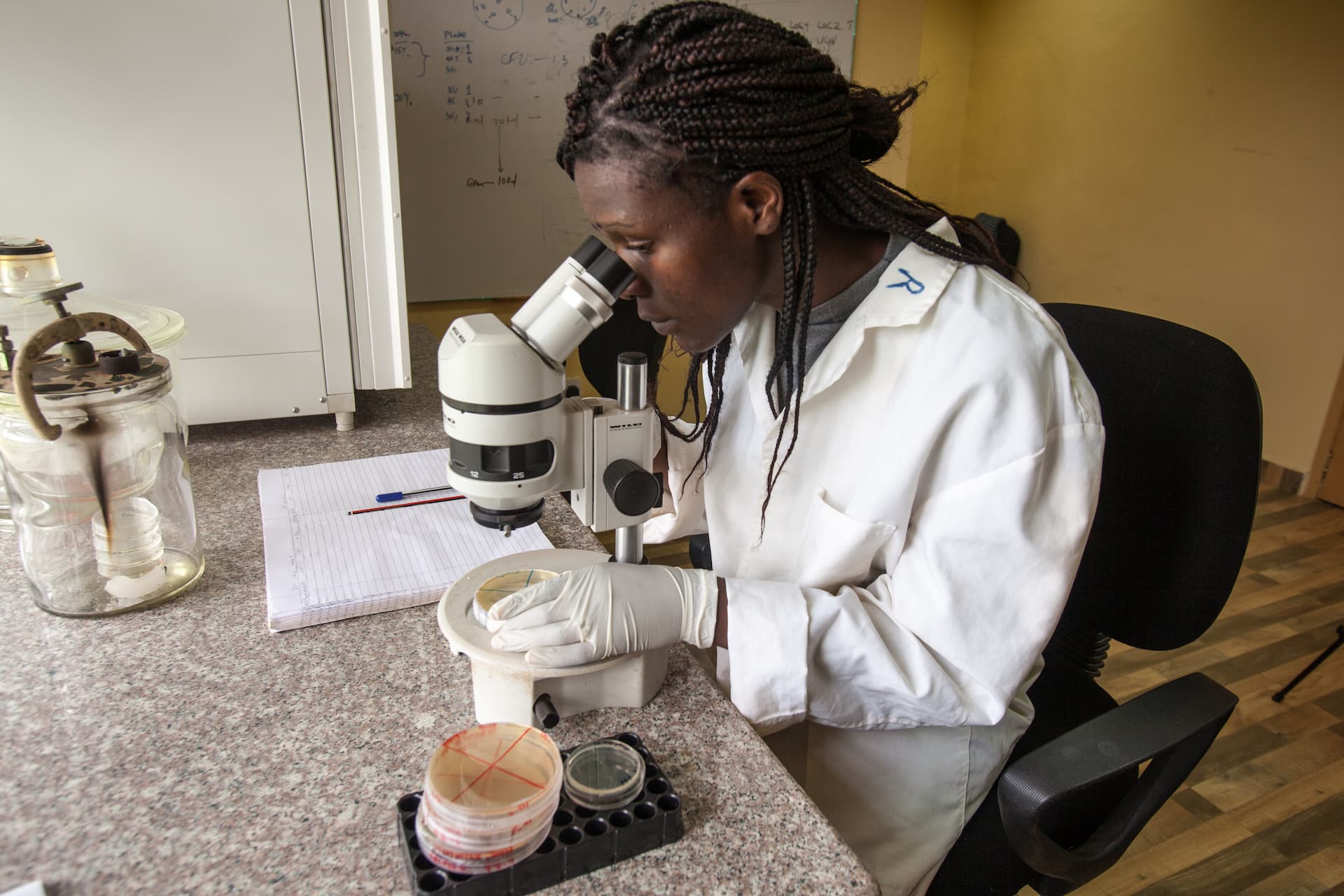Synthesis Report | Beta
Breaking barriers, Building bridges
A Southern-led research network to advance gender equality in STEM
The initiative and our approach
IDRC funded the Breaking Barriers projects in 2020 to address this knowledge gap. The cohort of 10 studies analyzed trends of gendered participation in Southern science systems and the embedded systemic and systematic inequities that prevent women from advancing in a range of fields and sectors in Latin America and sub-Saharan Africa. These studies generated evidence on the unique obstacles facing women and other marginalized groups in STEM in low-income countries.
Building on this pilot initiative, in 2021 funding was expanded for Gender in science, technology, engineering and mathematics (GIST or Gender in STEM).
By providing evidence on what works and grounded in the realities of women in low- and middle-income countries, we can create more equitable science systems that improve the lives of all.
The research aims to:
Increase understanding of the barriers that prevent women from progressing in STEM fields
Provide evidence on which strategies are most effective to break down those barriers in low- and middle-income countries
Improve women's leadership in science
Integrate gender analysis as a standard component of scientific research
The report
- Executive Summary
- The importance of women's participation and leadership in STEM
- The State of Women's Participation in STEM in the Global South
- A Multi-Pronged Approach to Addressing Systemic and Systematic Barriers to Achieving Gender Equity in STEM
- What have we learned so far?
- Conclusion and Recommendations
- Appendix
- References
Executive Summary
Achieving gender equity in STEM requires a multifaceted approach involving multiple stakeholders, across levels of impact and change. The Breaking Barriers Network demonstrates the potential for impactful change through targeted interventions and collaborative effort, but more is still needed to achieve lasting changes to institutions and the broader science system.
Read chapter:Executive Summary- Executive Summary
- The importance of women's participation and leadership in STEM
- The State of Women's Participation in STEM in the Global South
- A Multi-Pronged Approach to Addressing Systemic and Systematic Barriers to Achieving Gender Equity in STEM
- What have we learned so far?
- Conclusion and Recommendations
- Appendix
- References
Cuba, Haiti
Active
Advancing Gender Inclusion in Natural Sciences, Technology, Engineering, and Mathematics in Haiti
Gender in STEM Research Initiative
Read More:Advancing Gender Inclusion in Natural Sciences, Technology, Engineering, and Mathematics in HaitiEthiopia
Completed
Breaking Barriers to Women's Participation in Science, Technology, Engineering, and Mathematics in Ethiopia
Breaking systemic barriers to women's participation in science
Read More:Breaking Barriers to Women's Participation in Science, Technology, Engineering, and Mathematics in EthiopiaZimbabwe
Completed
Bridging the Gender Equality Gap in Science at Women's University in Africa
Breaking systemic barriers to women's participation in science
Read More:Bridging the Gender Equality Gap in Science at Women's University in AfricaBolivia
Active
Constructing Public Policy for Effective Participation of Women in Science, Technology, Engineering, and Mathematics in Bolivia
Breaking systemic barriers to women's participation in science
Read More:Constructing Public Policy for Effective Participation of Women in Science, Technology, Engineering, and Mathematics in BoliviaEthiopia, Ghana, Kenya, Nigeria, Rwanda, Senegal, South Africa, Tanzania, Uganda
Active
Eliminating Barriers to Women's Participation in Science: A Study of African Research Universities
Breaking systemic barriers to women's participation in science
Read More:Eliminating Barriers to Women's Participation in Science: A Study of African Research UniversitiesBrazil
Completed
Gender Disparities in Career Choices and Wage Dynamics in Science, Technology, Engineering, and Mathematics in Brazil
Breaking systemic barriers to women's participation in science
Read More:Gender Disparities in Career Choices and Wage Dynamics in Science, Technology, Engineering, and Mathematics in BrazilBangladesh, Nepal, Sri Lanka
Active
Gendering Water and Climate Science Research in South Asia
Gender in STEM Research Initiative
Read More:Gendering Water and Climate Science Research in South AsiaBolivia, Brazil, Peru
Active
Latin American Open Data for Gender Equality Policies Focusing on Leadership in STEM
Gender in STEM Research Initiative
Read More:Latin American Open Data for Gender Equality Policies Focusing on Leadership in STEMKenya, South Africa, Uganda, Zambia
Active
Pathway to Change: Towards Gender Justice in STEM Research in Africa (GEJUS-TA)
Gender in STEM Research Initiative
Read More:Pathway to Change: Towards Gender Justice in STEM Research in Africa (GEJUS-TA)Colombia
Active
Removing Barriers to Recruiting, Retaining, and Advancing Women in Science and Technology Fields in Colombia
Breaking systemic barriers to women's participation in science
Read More:Removing Barriers to Recruiting, Retaining, and Advancing Women in Science and Technology Fields in ColombiaBenin, Ivory Coast, Niger
Active
Strengthening Gender Inclusion in Agricultural Research for More Conclusive Results in West Africa
Gender in STEM Research Initiative
Read More:Strengthening Gender Inclusion in Agricultural Research for More Conclusive Results in West AfricaBurundi, Kenya, Rwanda, South Sudan, Tanzania, Uganda
Active
Supervision and Mentorship for Women in Science, Technology, Engineering, and Mathematics in East Africa
Breaking systemic barriers to women's participation in science
Read More:Supervision and Mentorship for Women in Science, Technology, Engineering, and Mathematics in East AfricaPeru
Completed
Supporting Indigenous Women in Science, Technology, Engineering, and Mathematics in Peru
Breaking systemic barriers to women's participation in science
Read More:Supporting Indigenous Women in Science, Technology, Engineering, and Mathematics in PeruArgentina
Completed
Technoscientific Labour and Gender Equity in Argentina: Comparing Barriers and Opportunities
Breaking systemic barriers to women's participation in science
Read More:Technoscientific Labour and Gender Equity in Argentina: Comparing Barriers and OpportunitiesBenin, Ghana
Completed
Women in Engineering Education and Careers in Benin and Ghana
Breaking systemic barriers to women's participation in science
Read More:Women in Engineering Education and Careers in Benin and Ghana
The Challenge
At IDRC, we believe that inclusivity contributes to innovation. We support a more inclusive approach to science, technology and innovation — one that not only integrates women as scientists and users of science, but that recognizes gender analysis as integral to high-quality research and innovation.
Women represent only 30% of the world's researchers, with even less representation in science leadership positions. In 2015, the Interacademy Partnership published the first comprehensive survey of science academies in its global network. Across the 69 national science academies for which data was available, women made up 10% or less of members in almost half of the countries.
Although the systemic barriers to the participation of women scientists is increasingly being studied, such data and case studies have historically been based on countries in the Global North.

Access Dismantling Gender Barriers in STEM
Want to go beyond the highlights of the Breaking Barriers report? This book dives deeper into the evidence, stories, and strategies for advancing gender equity in STEM. Explore comprehensive insights from the Global South, free to download.
Access
